Integrations
Integrations
Third-party integrations establish data channels between Bika and other applications/services, enabling automated SMS sending, email notifications, social media publishing, and more. After configuration, you can directly activate these services in automation workflows.
This guide explains how to use third-party integrations to expand Bika's capabilities.
Integrations in Bika.ai
Bika's integrations system connects different platforms like:
- Sending customer survey results to data dashboards
- Receiving project updates via Slack
- Syncing product inventory with e-commerce platforms
Currently supports 20+ mainstream applications. See integrations list in Bika integrations
Configuring Integrations
Enter the space setting
- Enter the space settings in the upper left corner
- Find the integrations configuration in the space settings
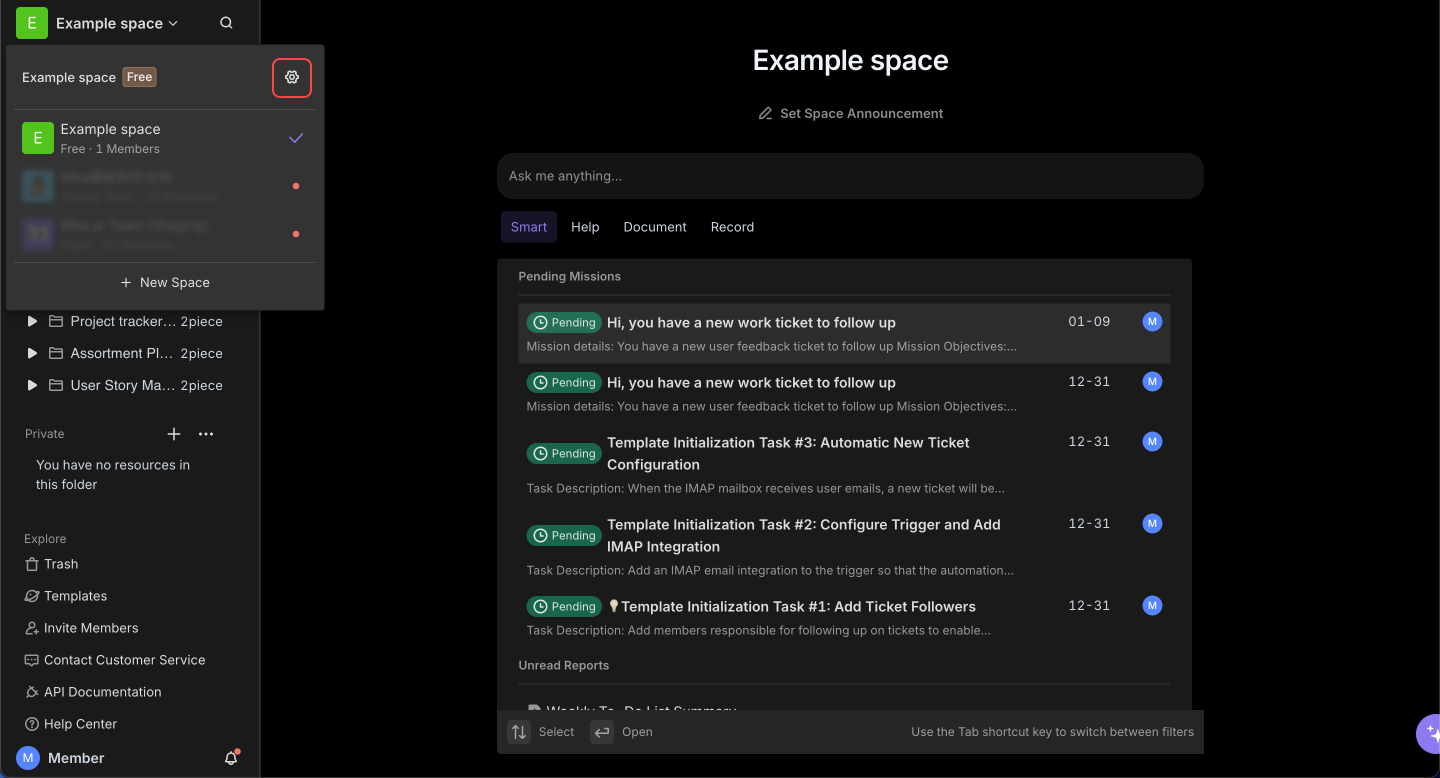
Add new integration
- Find the application you need (using OpenAI as an example)
- Click the "Connect" button in the upper right corner of the card.
- Fill in the authentication information in the pop-up configuration modal
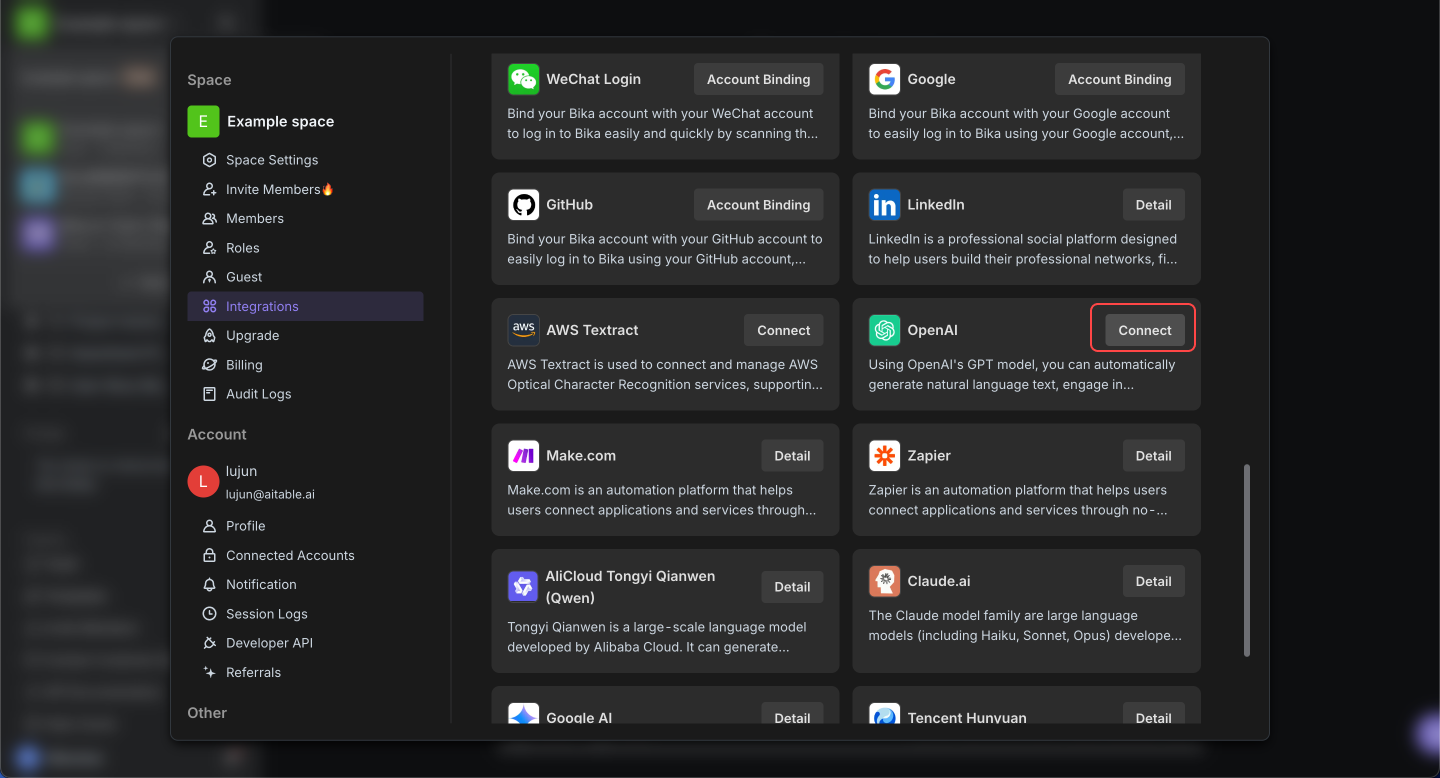
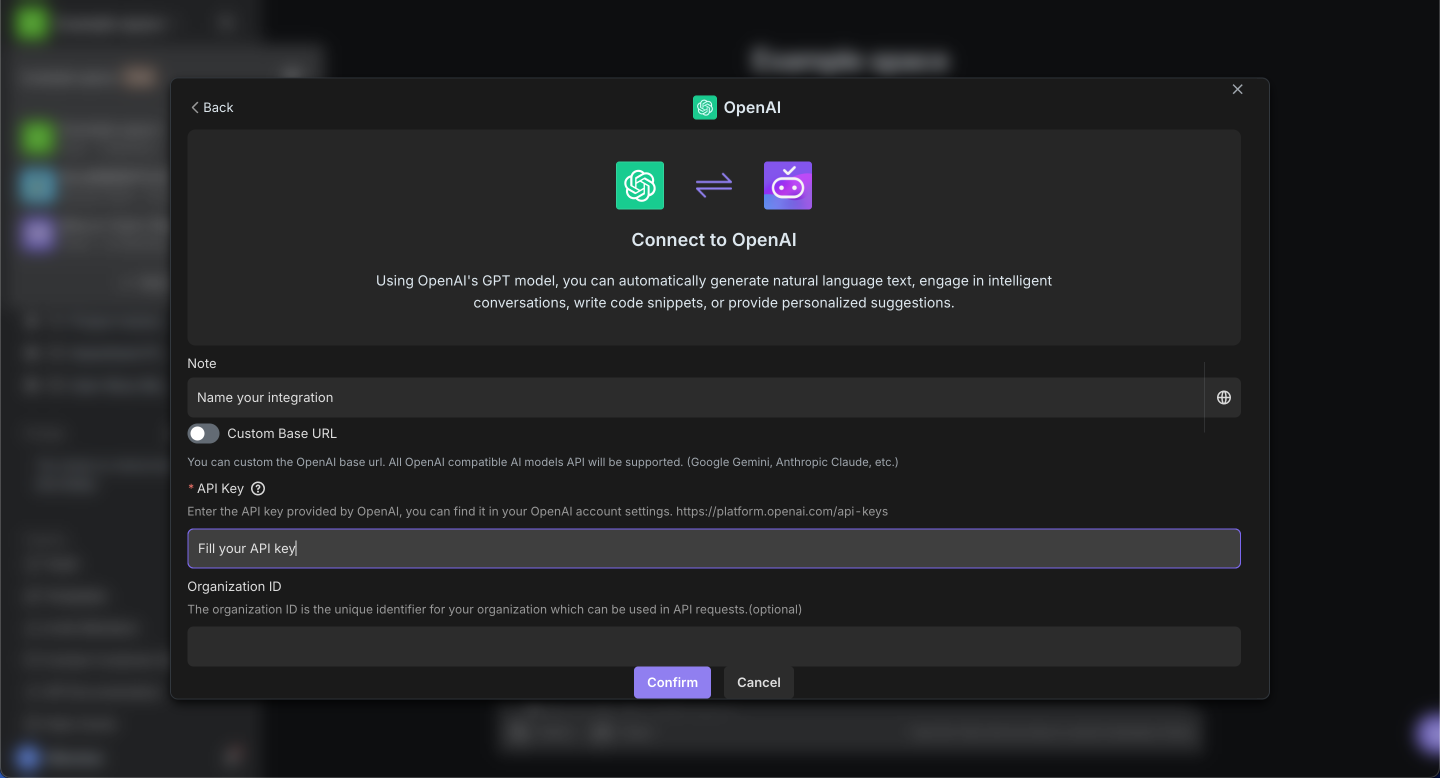
Configuration requirements vary by platform. Refer to official integration documentation.
Tutorials available for:
Manage existing integrations
Successfully added integrations will appear in the "My Integrations" list, which can be done here:
- Modify the configuration (Pencil icon)
- Reconnect authentication (Refresh icon)
- Delete integration (Trash can icon)
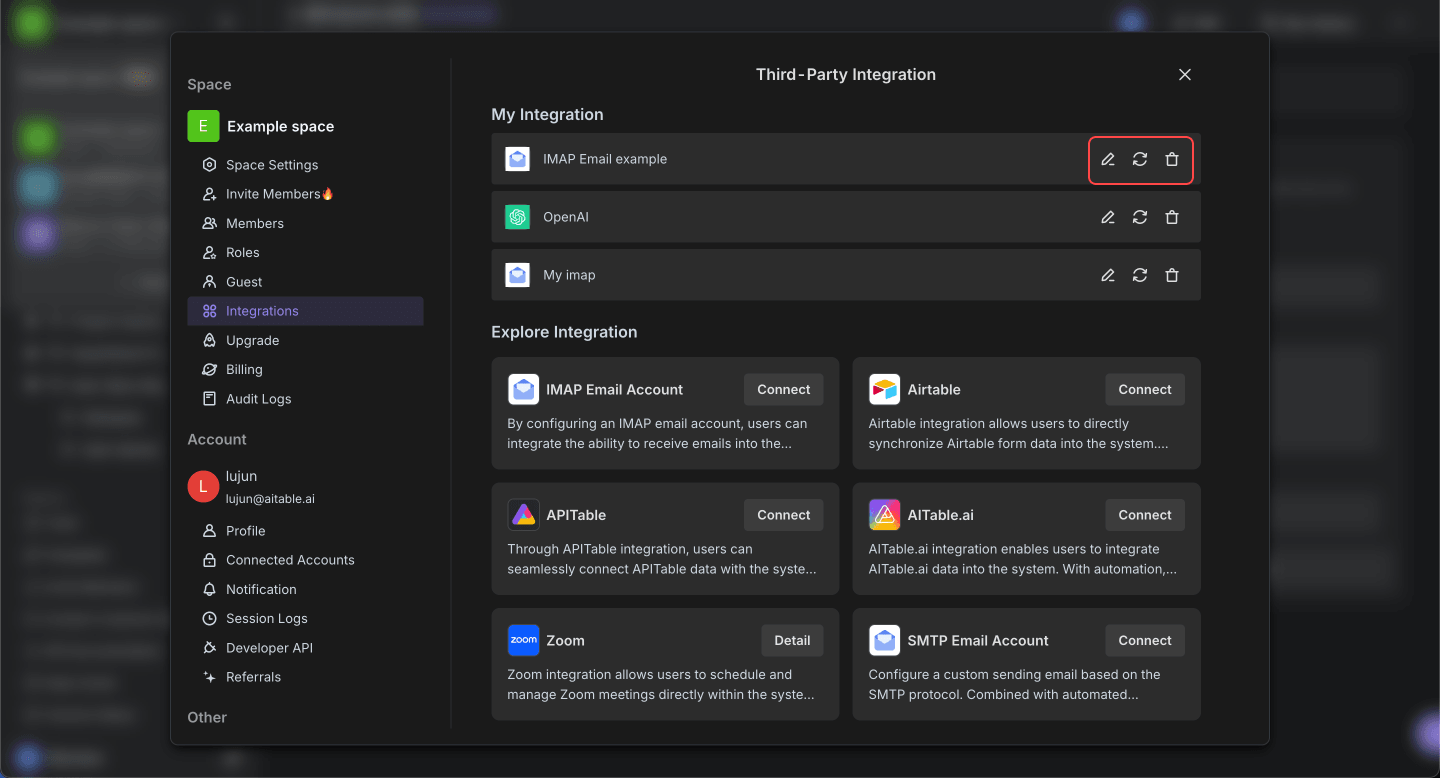
Practical applications in automation
⭐Usage 1: Extract the necessary parameters from the integration
- Manually enter the URL: Manually enter the webhook URL for the corresponding platform.
- Extract the URL from the integration: Select or create a new integration to obtain the corresponding webhook URL.
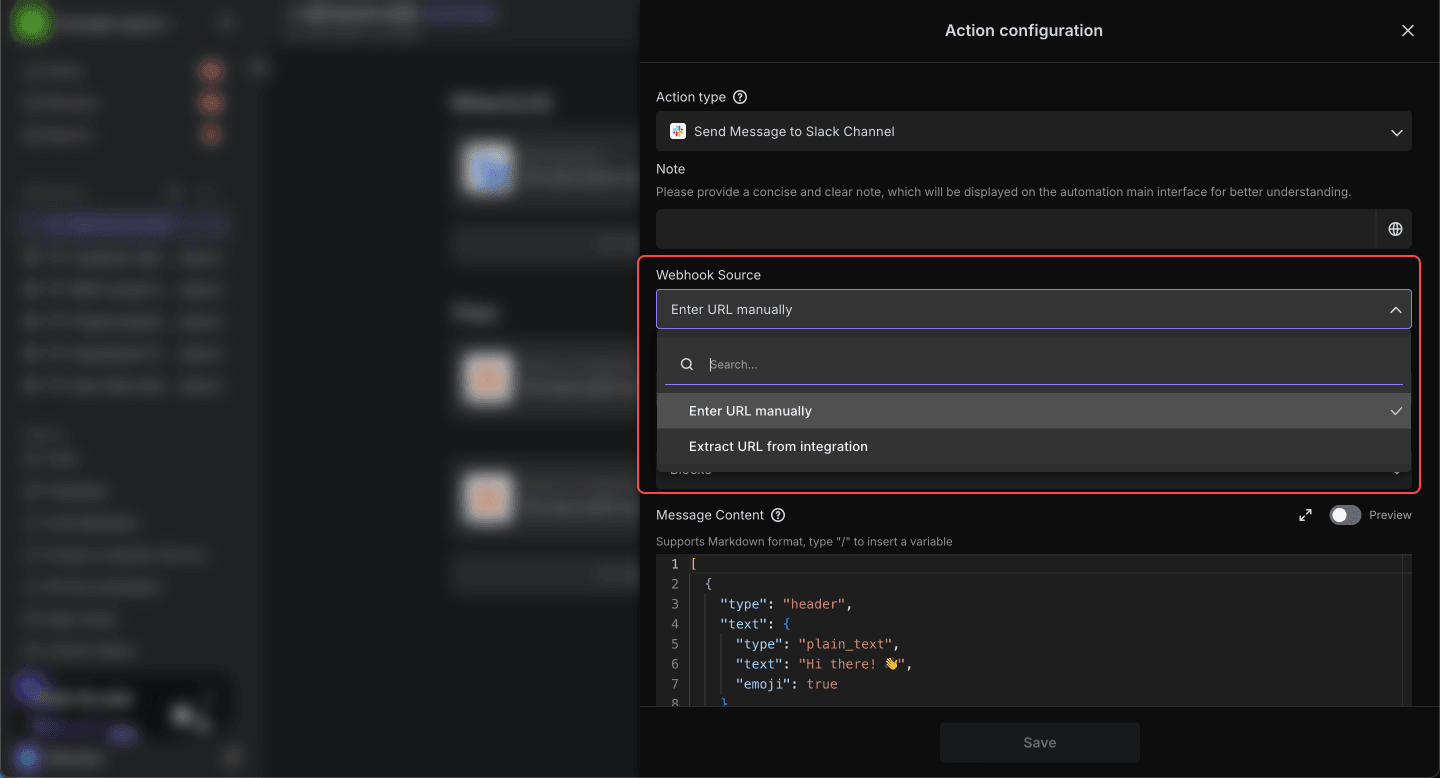
Select "Enter URL manually" to manually fill in the Slack webhook URL.
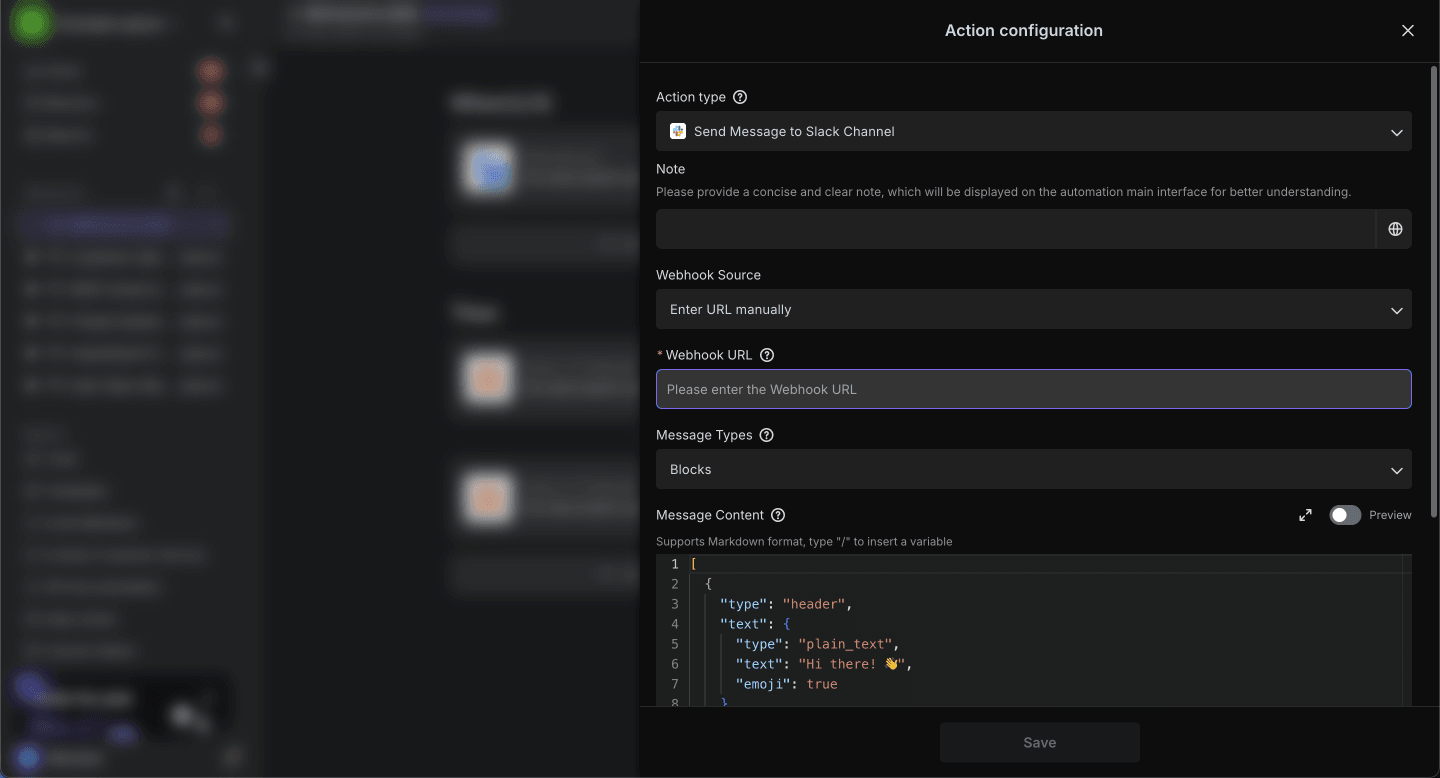
Select "Extract URL from Integration", and the "Available Integrations" drop-down option will appear. You can select a third-party integration that has been configured by the space in-app, or directly create a new integration and get the corresponding Webhook URL from it.
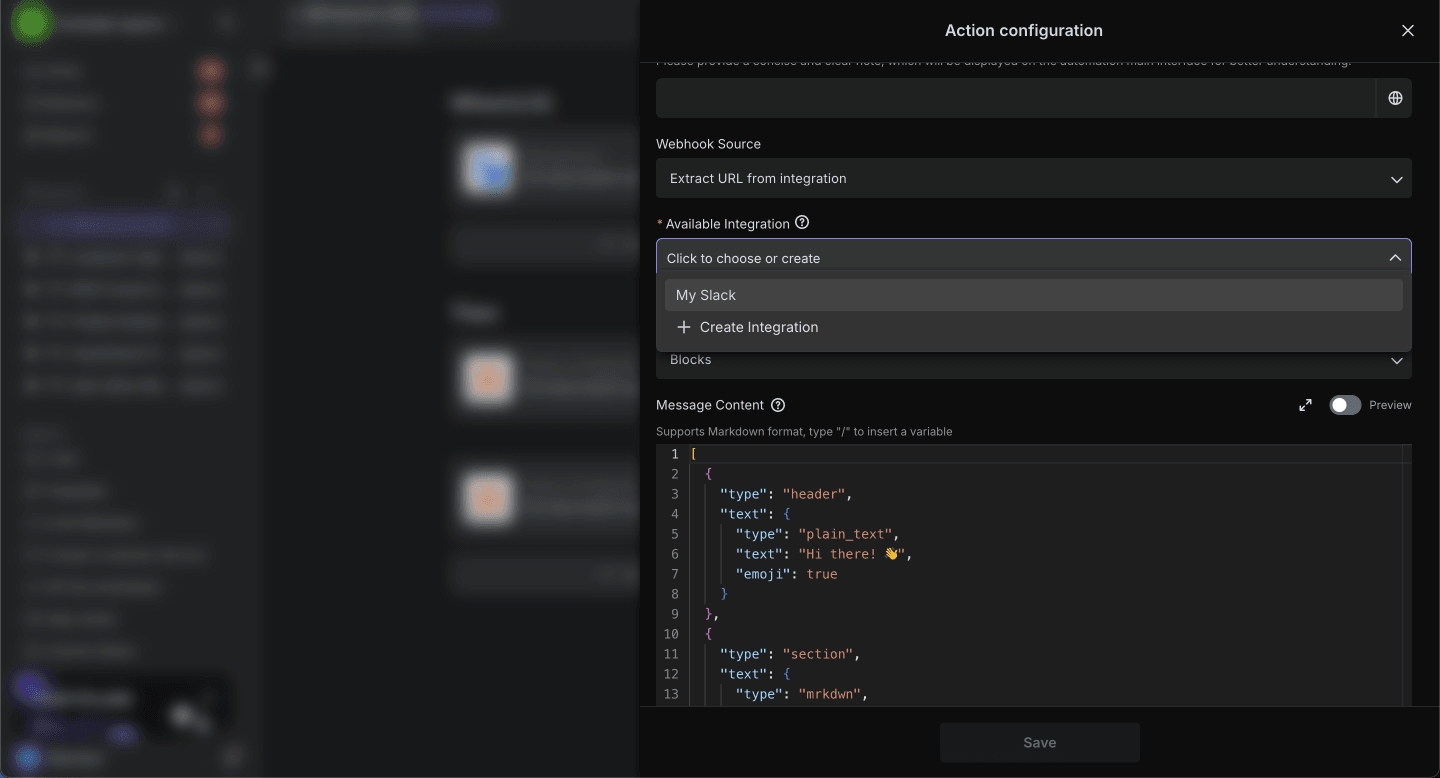
⭐Usage 2: Obtain an access token authorized by OAuth2
Applicable to services that require authentication tokens
For example, the automated execution of "X (Twitter) - Create Tweet" requires the use of X's API to create tweets. The X API requires OAuth2 authentication, so the X (Twitter) OAuth2.0 integration provided by Bika must be used to manage access tokens and fetch and refresh
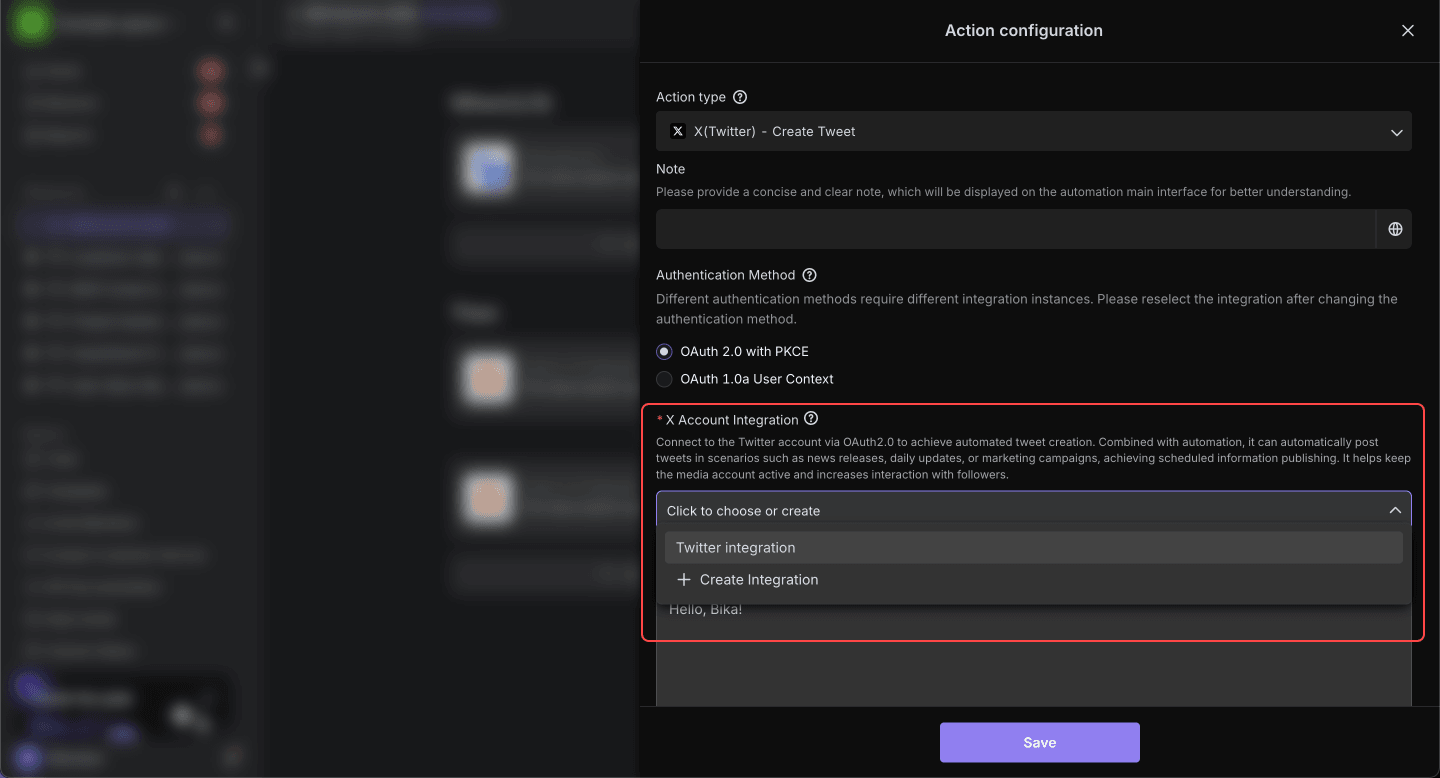
The advantages of using integration in automation
- Simplified configuration: By extracting parameters from the integration, configuration can be simplified, reducing the likelihood of errors.
- Unified management: Through integration, access tokens for third-party services can be managed uniformly, enhancing security.
- Repurposing: Through integration, you can repurpose already configured third-party services in multiple automated tasks to improve efficiency.
Recommend AI Automation Templates



Coming soon
